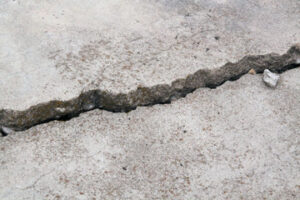When choosing Concrete Repair materials, many factors must be considered. Among these are the composition of the repaired area and the condition of the surrounding concrete. A concrete repair engineer will thoroughly evaluate the structure to determine the root cause of deterioration and select appropriate repair materials. The evaluation process may include the review of design documents, structural analysis of the structure that needs repair, and test data. The concrete repair engineer may also perform a chemical analysis of the sampled concrete to understand the deterioration process and the selection of appropriate materials.

Depending on the location of the repair, the materials and procedures used may differ from those used for the original mix. In some cases, environmental regulations require the use of specific equipment. Certain materials may also be odorous, toxic, or combustible. In addition, some repair materials must be applied quickly to minimize downtime. In addition, materials used for concrete repair must meet the strength requirements of the concrete and have good abrasion and skid resistance. If the concrete is in a heavy traffic area, there may be an additional need for a high-strength rating material.
Many times, cracks in the concrete are the first signs of deterioration. In addition to the appearance of cracks, concrete also has a wide range of structural problems that can affect a home’s foundation. Cracks can be caused by several factors, including soil settling and weather conditions. In such cases, concrete repair services will perform a comprehensive inspection of the concrete surface to determine if leveling is necessary.
Another option for crack repair is structural bonding. This process involves injecting a material into the concrete that resembles the concrete’s surface. The solution is stronger than the concrete itself and restores its strength. However, there are still risks associated with structural bonding, so a skilled contractor is required for the job. Afterward, the contractor will remove the injection ports and ground the area flush with the surrounding concrete matrix. A successful crack repair should prevent the crack from reappearing in the same place.
While it may be tempting to tackle a concrete repair on your own, you should always remember that the problem can be more severe than meets the eye. Whether it is a major structural defect or a small cosmetic defect, concrete repair professionals will need to determine the extent of the damage. A qualified professional engineer will be able to assess the severity of the concrete and determine the appropriate method for repair. If the cracks are small and do not penetrate the steel reinforcement, a dry cement fix will do the trick. If moisture is present, however, the dry cement will hydrate and fix the crack.
Surface defects are also the easiest to repair. But the repair material must be placed accurately and the repair process must be done competently. An outside agency must approve the repair procedure before the work can begin. Moreover, it must be properly inspected and documented. And, it is essential to have a concrete inspection performed every time it is needed to avoid the problem from worsening. You should also consider the materials that are used for the repair. There are many different types of defects, including cracks and holes.
Chemical and physical factors cause concrete to deteriorate. Chemical deterioration occurs mainly due to the loss of mass. In addition to this, the leaching of cement paste can increase the porosity of the concrete, making it susceptible to abrasion. The causes of deterioration include:
Another important property of concrete repair materials is bond strength. The bond strength of the material is determined by the repair material’s properties and the roughness of the concrete substrate’s surface. In one experiment, a pull-off test was performed according to BS EN 1542 (1999). The substrate was a layer of 20 MPa compressive strength. A polymeric mortar layer was then applied on top, a circular hole was then made through the layer and metallic discs were then glued to it.
Another method of concrete repair is the use of a concrete patch. These patches are incredibly easy to apply and can be troweled onto the surface. They are applied with a trowel and should be smoothed into a suitable shape. When using patching material, it is vital to not block the expansion joints of the concrete as this prevents water from running off and causing further cracks. Small cracks may set into a firm consistency within minutes, while larger cracks may take hours or even days.